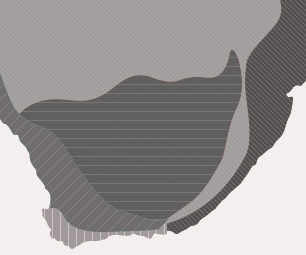Shrub
Pelargonium crispum (P.J.Bergius) L'Hér.
Family:
Common names: lemon-scented pelargonium, crisped-leaf pelargonium
Plant Attributes:
Plant Type:
SA Distribution:
Soil type:
Flowering season:
PH:
Flower colour:
Aspect:
Gardening skill:
Special Features:
Horticultural zones

Pelargonium denticulatum Jacq.
Family:
Common names: toothed-leaved pelargonium, pine-scented geranium, fernleaf geranium
Plant Attributes:
Plant Type:
SA Distribution:
Soil type:
Flowering season:
PH:
Flower colour:
Aspect:
Gardening skill:
Special Features:
Horticultural zones

Pelargonium capitatum (L.) L'Hér.
Family:
Common names: rose-scented pelargonium, coast pelargonium ( Eng. ); kusmalva (Afr.)
Plant Attributes:
Plant Type:
SA Distribution:
Soil type:
Flowering season:
PH:
Flower colour:
Aspect:
Gardening skill:
Special Features:
Horticultural zones

Pelargonium citronellum J.J.A. van der Walt
Family:
Common names: citronella pelargonium, lemon-scented pelargonium ( Eng. ); malva (Afr.)
Plant Attributes:
Plant Type:
SA Distribution:
Soil type:
Flowering season:
PH:
Flower colour:
Aspect:
Gardening skill:
Special Features:
Horticultural zones

Pelargonium crassicaule L'Hér.
Family:
Common names: none
Plant Attributes:
Plant Type:
SA Distribution:
Soil type:
Flowering season:
PH:
Flower colour:
Aspect:
Gardening skill:
Special Features:
Horticultural zones

Pelargonium acetosum (L.) L'Hér.
Family:
Common names: sorrel-leaved pelargonium
Plant Attributes:
Plant Type:
SA Distribution:
Soil type:
Flowering season:
PH:
Flower colour:
Aspect:
Gardening skill:
Special Features:
Horticultural zones

Pelargonium acraeum R.A.Dyer
Family:
Common names: horseshoe pelargonium
Plant Attributes:
Plant Type:
SA Distribution:
Soil type:
Flowering season:
PH:
Flower colour:
Aspect:
Gardening skill:
Special Features:
Horticultural zones

Pelargonium betulinum (L.) L'Herit.
Family:
Common names: camphor-scented pelargonium, birch-leaved pelargonium (Eng.); kanferblaar, maagpynbossie, suurbos (Afr.)
Plant Attributes:
Plant Type:
SA Distribution:
Soil type:
Flowering season:
PH:
Flower colour:
Aspect:
Gardening skill:
Special Features:
Horticultural zones

Pavetta cooperi Harv. & Sond.
Family:
Common names: Christmas bush, pompon bride's bush (Eng.); pomponbruidsbos, kers(mis)bos (Afr.); luphehlwane (Siswati); is-Anywana (Zulu).
SA Tree No: 719
Plant Attributes:
Plant Type:
SA Distribution:
Soil type:
Flowering season:
PH:
Flower colour:
Aspect:
Gardening skill:
Special Features:
Horticultural zones

Pelargonium abrotanifolium (L.f.) Jacq.
Family:
Common names: southernwood-leaf pelargonium (Eng.); klipmalvabossie, maagbossie, wildemalva (Afr.)
Plant Attributes:
Plant Type:
SA Distribution:
Soil type:
Flowering season:
PH:
Flower colour:
Aspect:
Gardening skill:
Special Features:
Horticultural zones






Rate this article
Article well written and informative
Rate this plant
Is this an interesting plant?
Login to add your Comment
Back to topNot registered yet? Click here to register.